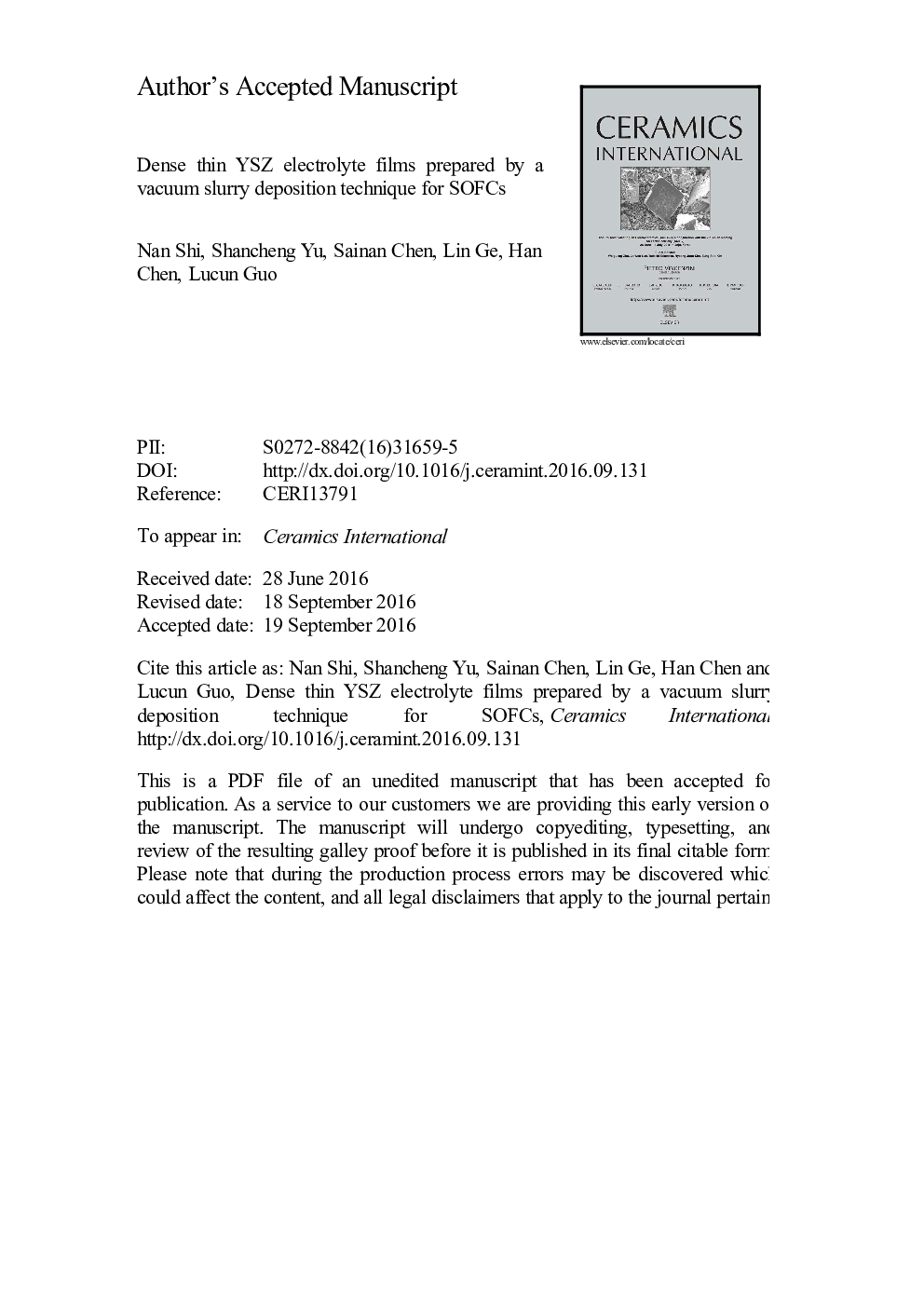| Article ID | Journal | Published Year | Pages | File Type |
|---|---|---|---|---|
| 5438128 | Ceramics International | 2017 | 24 Pages |
Abstract
A novel vacuum deposition technique based on a slurry coating is proposed for the preparation of thin yttria-stabilized zirconia (YSZ) electrolyte films on a porous NiO-YSZ substrate for solid oxide fuel cells (SOFCs). The vacuum pressure not only improved the packing density of the electrolyte particles but also enhanced the bonding strength between the anode and electrolyte layers. The polarization resistance of the cell prepared via vacuum deposition decreased from 1.27 to 0.89 Ω cm2, which resulted in a remarkable increase in the peak power density from 249 to 292 mW cmâ2 at 800 °C. An anode functional layer (AFL) was also fabricated by the vacuum slurry deposition method in an attempt to increase the three-phase boundaries (TPBs) at the anode/electrolyte interface. The scanning electron microscopy (SEM) images revealed that the sintered YSZ electrolyte film has a crack-free, dense and homogeneous microstructure. These experimental results indicate that slurry vacuum deposition is an effective technique for producing dense thin films for SOFCs and other applications.
Related Topics
Physical Sciences and Engineering
Materials Science
Ceramics and Composites
Authors
Nan Shi, Shancheng Yu, Sainan Chen, Lin Ge, Han Chen, Lucun Guo,
